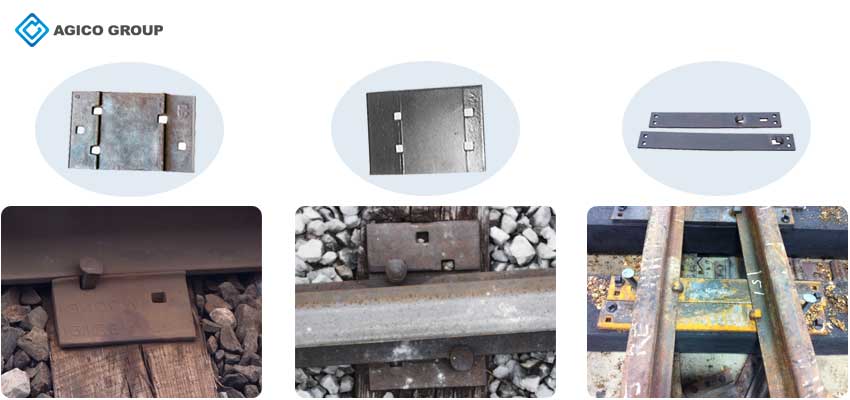
A tie plate, also known as base plate or sole plate, is a steel plate that is used between the steel rail and railway sleeper. Tie plates basically have some holes and shoulder(s). But there is no shoulder in some types of tie plates. Rail tie plates usually have tapered side to improve the stability and reduce the twisting and torsion of rails.
There are close relationship between rail and tie plates. Each tie plate is generally made for corresponding rail sizes. In another words, the tie plate has to be matched with the width of steel rails. As for the production process, tie plate can be made via three processes: hot-rolling, casting and forging.
In the early days of rail track construction, there is no need of railroad tie plates. The track bed (made by stone and gravel) and wooden sleeper act as the support to steel rails. Fastening steel rails to railroad ties is mainly by dog spikes.
Since the 20th century, tie plate is widely applied into railroad track. Before nailing railroad spike into railroad tie, passes it through tie plate, which helps to fix rail and ties well.
Nowadays, railroad tie plate is mostly used in the wooden tie constructions. At the same time, it is needed less in the concrete sleeper constructions.
As one of the railroad components, tie plates are used to fix rail to railroad ties and keep the rail safe. To be specific, the functions of railroad tie plates are as follows:
- Tie plates transmit the load from steel rail to the railroad ties. They provide even support surface for rail and prevent rail from movement
- Tie plate helps the rail maintain their gauge, which keep the safety of train running
- Tie plate reduce the friction between rail and railroad tie
- Tie plate protect railroad ties from excessive wear, so that prolong their service life
- Tie plate provide proper cant and bear the central load
Types of tie plate
According to the different applications and design, tie plates can be divided into many types, including single shoulder tie plates, double shoulder tie plates and hook twin tie plates.
Single shoulder tie plate
Single shoulder tie plate means the top surface of the tie plate has one shoulder, which can fit the rail base. Single shoulder tie plates are an old kind of tie plate that are not available. Single shoulder tie plate is suitable for almost any rail widths. Most often, rail base width according to requirement. The single shoulder is normally placed on the outside of rail.
Double shoulder tie plate
Compared to single-tie plate, double shoulder tie plates contain two shoulders on the top surface. Double shoulder tie plates are the currently used type. According to the AMREA standard, double shoulder tie plate are available for 5.5in and 6in base rails. Common types include four to eight holes.
Hook twin tie plate
Hook twin tie plates (HTTP) are used for frog, guide rails, and behind the heel of rail switches. There is a slotted hole in the HTTP, which makes it different from other kinds of tie plate. Generally, HTTPs are designed to comply with the AREMA standard and can fit any rail sections. Besides that, the HTTP work in pairs to create a single railroad tie.
By the types of the hook, hook twin tie plate has three normal types: type L, type LR and type H. Among all AMERA standard hook twin tie plates, 0.75in and 1in thick are two popular types.
- For 0.75in thick: L23, L27, L31, LR23, LR27, LR31, H23, H27, H31
- For 1in thick: L29, L33, L37, LR28, LR32, LR36, H29, H33, H37, H41
In addition to these kinds of tie plate, there are many other types such as pandrol tie plates and tie plates for KPO rail fastening.
Railroad tie plates give support to rail and make railway track reliable and safe with other rail components, such as railway fish plate, rail clip and railroad spikes.
